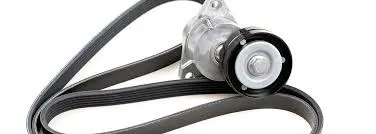- Arabic
- French
- Russian
- Spanish
- Portuguese
- Turkish
- Armenian
- English
- Albanian
- Amharic
- Azerbaijani
- Basque
- Belarusian
- Bengali
- Bosnian
- Bulgarian
- Catalan
- Cebuano
- Corsican
- Croatian
- Czech
- Danish
- Dutch
- Afrikaans
- Esperanto
- Estonian
- Finnish
- Frisian
- Galician
- Georgian
- German
- Greek
- Gujarati
- Haitian Creole
- hausa
- hawaiian
- Hebrew
- Hindi
- Miao
- Hungarian
- Icelandic
- igbo
- Indonesian
- irish
- Italian
- Japanese
- Javanese
- Kannada
- kazakh
- Khmer
- Rwandese
- Korean
- Kurdish
- Kyrgyz
- Lao
- Latin
- Latvian
- Lithuanian
- Luxembourgish
- Macedonian
- Malgashi
- Malay
- Malayalam
- Maltese
- Maori
- Marathi
- Mongolian
- Myanmar
- Nepali
- Norwegian
- Norwegian
- Occitan
- Pashto
- Persian
- Polish
- Punjabi
- Romanian
- Samoan
- Scottish Gaelic
- Serbian
- Sesotho
- Shona
- Sindhi
- Sinhala
- Slovak
- Slovenian
- Somali
- Sundanese
- Swahili
- Swedish
- Tagalog
- Tajik
- Tamil
- Tatar
- Telugu
- Thai
- Turkmen
- Ukrainian
- Urdu
- Uighur
- Uzbek
- Vietnamese
- Welsh
- Bantu
- Yiddish
- Yoruba
- Zulu
Dec . 11, 2024 10:06 Back to list
Understanding the Importance of Timing Belt Functions in Engine Performance
The Function of Timing Belts A Critical Component in Engine Performance
The timing belt is a crucial component in the internal combustion engine of most modern vehicles. Its primary function is to synchronize the rotation of the crankshaft and camshaft, ensuring that the engine’s valves open and close at the correct times during each cylinder's intake and exhaust strokes. By maintaining this precise timing, the timing belt plays a significant role in maximizing engine efficiency, performance, and longevity.
Understanding the Timing Belt
The timing belt is made of durable rubber reinforced with materials such as fiberglass or steel to withstand the high temperatures and intense pressures found in an engine. Unlike the serpentine belt, which drives several accessories such as the alternator and power steering pump, the timing belt is a critical part of the engine’s design and function. It typically has teeth or ribs that mesh with the gears on the crankshaft and camshaft, providing a secure grip that prevents slippage.
Importance of Timing Belt Functionality
The synchronization achieved by the timing belt is vital for the engine to function properly. When the crankshaft rotates, it drives the pistons up and down. The camshaft, meanwhile, regulates the opening and closing of the engine's valves. If these two components are not perfectly aligned—if, for instance, the timing belt were to slip or break—the engine could experience severe issues, including misfires, loss of power, and in extreme cases, catastrophic engine failure.
A well-maintained timing belt ensures that all engine components operate harmoniously. In contrast, a worn or faulty timing belt can lead to significant mechanical problems. Signs of a timing belt issue may include a ticking noise coming from the engine, difficulty starting the engine, or oil leaks near the timing cover. These symptoms should prompt immediate inspection to prevent further damage.
timing belt function

Timing Belt Replacement
Most manufacturers recommend replacing the timing belt every 60,000 to 100,000 miles, though this can vary based on the make and model of the vehicle. Regular maintenance is essential for preventing unexpected breakdowns. When servicing the timing belt, mechanics often recommend replacing associated components, such as the water pump, tensioners, and pulleys, as they are prone to wear and can affect the performance of the new timing belt.
Failing to replace a timing belt in a timely manner can result in a belt rupture, leading to a situation known as valve-bounce. This occurs when the pistons and valves collide due to a desynchronized timing mechanism, causing bent valves and extensive engine damage. For car owners, understanding the maintenance schedule for the timing belt is an essential aspect of vehicle care.
Innovations in Timing Belts
As automotive technology evolves, so too does the design and materials used in timing belts. Advances have led to the development of timing belts that offer improved performance and longer lifespans. For example, some newer belts are designed with advanced materials that enhance durability and resistance to heat and stress. Additionally, timing chains and other alternatives have emerged, offering different benefits such as reduced noise and extended service intervals.
Conclusion
The timing belt is a small but vital component that significantly influences engine performance and durability. Properly functioning timing belts ensure that engines run smoothly and efficiently, while neglecting their maintenance can lead to disastrous consequences. Car owners should familiarize themselves with the maintenance requirements of their vehicles and pay attention to any signs of timing belt issues. Through regular inspections and timely replacements, drivers can avoid costly repairs and enjoy a reliable driving experience. As automotive technology continues to advance, it will be interesting to see how timing belts evolve, but their fundamental role in engine synchronization will remain essential for years to come.
-
Korean Auto Parts Timing Belt 24312-37500 For Hyundai/Kia
NewsMar.07,2025
-
7PK2300 90916-T2024 RIBBED BELT POLY V BELT PK BELT
NewsMar.07,2025
-
Chinese Auto Belt Factory 310-2M-22 For BMW/Mercedes-Benz
NewsMar.07,2025
-
Chinese Auto Belt Factory 310-2M-22 For BMW/Mercedes-Benz
NewsMar.07,2025
-
90916-02660 PK Belt 6PK1680 For Toyota
NewsMar.07,2025
-
drive belt serpentine belt
NewsMar.07,2025

